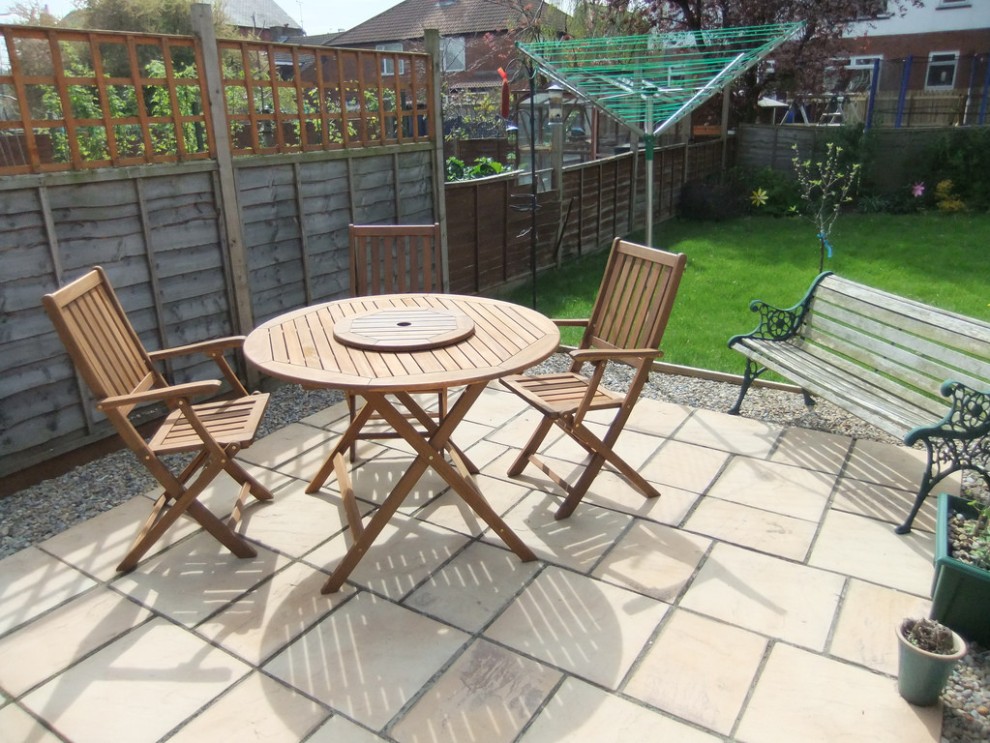Constructing a patio is a task that every homeowner considers sooner or later. First of all, during the wetter part of the year, this gives you an option to spend some time outdoors without having to worry about getting your shoes muddy. During the summer, it gives you an alternative living room where you can greet your guests and spend time in order to reduce the power drained by your AC unit. On the other hand, the cost, the functionality and the durability of the patio will be determined by the material you choose. So, here are some considerations you should probably make before making a decision.

1. Gravel
The first obvious benefit of gravel can be seen in the fact that it’s incredibly cost-effective. First of all, it costs under $10 per square foot and it doesn’t really have a lifespan if properly maintained. Another massive benefit of this method can be found in the fact that it doesn’t require a complex installation. In other words, if you had an idea of making your own patio and you don’t have the slightest clue of what you’re doing, gravel is just the thing you need. All you need is a simple YouTube tutorial and you’ll be set and ready to go. As for the aesthetics, keep in mind that this particular material goes quite well with both colonial and Victorian style. Moreover, it can be seamlessly integrated into the landscape of your garden.
2. Concrete
Another material worth considering is concrete, which can be either poured or stamped. Here, you also stand to save quite a bit, seeing as how the average price (between $6 and $13 per square foot) isn’t that far from what you’d have to pay for the gravel. The dissimilarity comes in terms of durability. In theory, gravel lasts indefinitely, while concrete (with proper maintenance) may last up to 30 years. This nonetheless is such a long lifespan that you probably won’t be able to tell the difference.
After all, what are the odds that you’ll allow for three decades to pass before doing a remodel of your backyard? More importantly, concrete is much more favourable towards any furniture you place on it (when compared to gravel). The downside of concrete lies in the fact that you probably shouldn’t try to install it on your own. Instead, it’s much better to look for seasoned veterans of the business like the North Brisbane patio company and ask for their assistance.
3. Brick
Here’s an unusual suggestion, instead of just using it in construction, why not use bricks to pave your patio. Off the top, it’s important to stress out that this solution costs a bit more than two previously discussed and may reach as much as $20 per square foot. On the other hand, a brick patio has the lifespan of over a century. Even when cracked due to poor negligence, this doesn’t diminish the functionality of the flooring, nor does it necessarily make the patio overall less aesthetic. The installation, nonetheless, is fairly professional, which is why it should be entrusted to someone with previous experience in this field.
4. Stone
This particular option is incredibly popular, yet, it’s also expensive and complex to install. The price range moves between $14 to $28 per square foot but homeowners who do decide to go for this option find that it is more than worth this price. Like with the brick, this solution also shows promise of outlasting a century and the aging process affects it even less than it does any other material. Furthermore, if you want to go for a bit more lavish outdoors design, nothing beats the stone.
5. Concrete Pavers
Concrete pavers are more or less a combination of the technique used with brick and the concrete. As such, it’s a perfect compromise when it comes to the price and durability. It lasts between 50 and 100 years, which is right between bricks and poured or stamped concrete. The price is usually lower than $20 per foot, which puts it on pare with bricks. The complexity of the installation is the same, which is something you should consider when choosing between these two options. On paper, however, it seems clear that bricks are still a slightly superior option and that the only reason to opt for concrete pavers is purely aesthetic.
In conclusion
At the very end, the choice of the material is not something that should be made lightly. After all, keep in mind that the least durable of solution lasts over 30 years, which means that if you don’t do a remodel, you will have to watch the option you choose every single day for years and decades to come. Even if all the options in question had the same durability, cost and reliability, visuals alone would be a good enough reason to carefully consider your possibilities.



